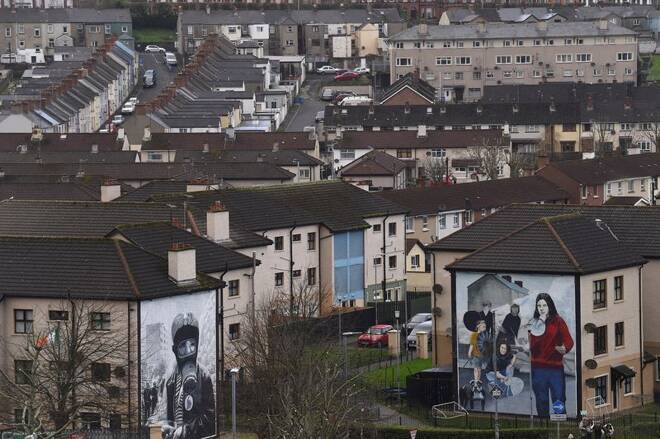Advertisement
Advertisement
The 30 years of Northern Ireland’s ‘Troubles’
By:
(Reuters) - On April 10 it will be 25 years since the signing of the Good Friday Agreement which largely ended three decades of conflict in Northern Ireland, known locally as the "Troubles".
(Reuters) – On April 10 it will be 25 years since the signing of the Good Friday Agreement which largely ended three decades of conflict in Northern Ireland, known locally as the “Troubles”.
Following are some of the violent events of the period:
1968 – A civil rights campaign by Catholics protesting against discrimination in the British-ruled province gathers momentum. Sectarian rioting erupts in Belfast, Londonderry and elsewhere.
Jan. 30, 1972 – “Bloody Sunday”. British troops opened fire on peaceful protesters at a civil rights march in Londonderry. Thirteen people were killed and a 14th died later from his wounds.
July 21, 1972 – “Bloody Friday”. In a 75-minute period, the Irish Republican Army (IRA) exploded 22 bombs across Belfast, killing nine people and wounding around 130.
May 17, 1974 – Four car bombs exploded in Dublin and County Monaghan, in the Irish Republic, killing 33 people and an unborn child and wounding more the 250. It was the biggest loss of life in a single day of the Troubles. In 1993 the loyalist Ulster Volunteer Force (UVF) acknowledged it carried out the attacks.
Nov. 21, 1974 – IRA bombs exploded in two pubs in Birmingham, central England, killing 21 people. Six Irish men convicted over the attacks, who became known as the “Birmingham Six”, served 16 years in prison before being freed on appeal in 1991.
Aug. 27, 1979 – A bomb hidden aboard his fishing boat killed Lord Louis Mountbatten, Queen Elizabeth’s cousin, and three others in County Sligo, in the Irish Republic.
Hours later, two IRA remotely detonated bombs killed 18 British soldiers on the shores of Carlingford Lough at Warrenpoint, County Down.
July 20, 1982 – Two remote-controlled IRA bombs killed 11 members of the British Army in attacks on military ceremonies at Hyde Park and Regent’s Park in central London.
Nov. 8, 1987 – 11 people, including a police officer, were killed in an IRA bomb attack during a Remembrance Day ceremony in Enniskillen, County Fermanagh.
Oct. 23, 1993 – Nine civilians and an IRA member were killed when a bomb exploded prematurely in a fish shop on the staunchly Protestant Shankill Road, in Belfast. The IRA later said the target had been the leadership of the loyalist Ulster Defence Association (UDA), whom it had wrongly thought were meeting in a room above the shop.
Oct. 30, 1993 – UDA gunmen killed seven people in an attack on the Rising Sun bar in the overwhelming Catholic village of Greysteel, County Londonderry. An eighth victim died later. One of the gunmen shouted “trick or treat” before opening fire, in what the loyalist group said was retaliation for the Shankill Road bombing.
June 18, 1994 – Six Catholic civilians were killed while watching an Ireland World Cup match in a bar in Loughinisland, County Down, in a gun attack carried out by the UVF.
Aug 15, 1998 – A car bomb planted by the “Real IRA”, a republican splinter group opposed to the Good Friday Agreement, exploded in Omagh, County Tyrone, killing 29 people, including a woman pregnant with twins.
It was the bloodiest single incident of the Troubles. Although there has been sporadic violence from dissident groups since, it was also the last major attack.
Sources: Reuters, Ulster University CAIN archive
(Compiled by Alex Richardson; Editing by Janet Lawrence)
About the Author
Reuterscontributor
Reuters, the news and media division of Thomson Reuters, is the world’s largest international multimedia news provider reaching more than one billion people every day. Reuters provides trusted business, financial, national, and international news to professionals via Thomson Reuters desktops, the world's media organizations, and directly to consumers at Reuters.com and via Reuters TV. Learn more about Thomson Reuters products:
Advertisement
